How to Encourage Your Neighbors to Recycle
In today's world, where environmental concerns are at an all-time high, encouraging your neighbors to recycle can feel like a daunting task. However, it’s not just about the act of recycling; it’s about fostering a community culture that values sustainability and environmental responsibility. Imagine living in a neighborhood where everyone actively participates in recycling efforts, reducing waste collectively, and conserving precious resources. Sounds amazing, right? Well, it’s entirely possible! This article explores effective strategies that can inspire your neighbors to adopt recycling practices, creating a ripple effect of positive change.
Before diving into how to motivate others, it’s essential to understand why recycling is so crucial. Recycling is not just a buzzword; it plays a significant role in reducing waste and conserving our planet's resources. When we recycle, we’re not only preventing items from ending up in landfills but also saving energy and reducing pollution. Think of it this way: recycling is like giving a second life to materials that would otherwise be discarded. By understanding the benefits of recycling, individuals can feel more inspired to participate actively in community initiatives. So, let’s break down some of the key benefits:
- Reduces Waste: Recycling diverts waste from landfills, helping to manage waste more effectively.
- Conserves Resources: It decreases the need for raw materials, preserving natural resources for future generations.
- Saves Energy: The recycling process typically uses less energy compared to producing new products from raw materials.
- Promotes Community Engagement: Recycling can bring people together, fostering a sense of community and shared responsibility.
One of the most effective ways to encourage recycling is by organizing neighborhood recycling events. These gatherings not only bring neighbors together but also create a collective sense of responsibility towards the environment. Imagine setting up a fun event where everyone can learn about recycling while connecting with each other! These events can serve as educational opportunities, showcasing the importance of recycling and how to do it effectively. Plus, they can be a lot of fun!
To ensure your event is a hit, careful planning is essential. Here are some key steps to consider:
- Select a Suitable Location: Choose a central location that is easily accessible for everyone in the neighborhood.
- Set a Date: Pick a date that works for the majority, perhaps on a weekend when people are more likely to be free.
- Promote the Event: Use flyers, local bulletin boards, and social media to spread the word and maximize participation.
By following these steps, you can create an event that not only educates but also excites your neighbors about recycling.
Another fantastic way to enhance your recycling event is by partnering with local businesses. This collaboration can boost the event's visibility and support, making it more successful. Businesses can provide sponsorship, resources, or even incentives for attendees, like discounts or giveaways. Imagine having a local café offer free coffee to participants! This creates a win-win situation where businesses gain exposure, and your community benefits from increased engagement. It’s a great way to strengthen local ties and promote sustainability simultaneously!
Providing informative flyers or brochures about recycling can significantly help educate attendees. These materials can outline what items are recyclable, the benefits of recycling, and even tips on how to recycle properly. Think of these as your community's guide to recycling! The more information you provide, the more empowered your neighbors will feel to participate actively in recycling efforts.
Establishing a network among neighbors can facilitate ongoing recycling efforts. This network can be a space where everyone shares resources, tips, and success stories. Imagine a group where neighbors can post about their recycling achievements or ask for advice on what to do with hard-to-recycle items. This ongoing dialogue can encourage continuous participation in recycling initiatives, making it a regular part of community life.
In today’s digital age, social media platforms can be powerful tools for promoting recycling efforts. By sharing information, tips, and success stories online, neighbors can inspire one another to engage in sustainable practices. Think about the impact of a simple post showcasing a successful recycling event or a unique recycling project. It can motivate others to jump on board!
Forming a dedicated group on social media can provide a space for discussions, sharing resources, and coordinating recycling efforts among neighbors. This group can serve as a hub for information, making it easy for everyone to stay informed and engaged. Plus, it fosters a sense of community engagement, where everyone feels they are part of something bigger.
Sharing individual or group success stories can be incredibly motivating. When people see the positive impact of recycling within the community, it creates a ripple effect of participation. Whether it’s a family that reduced their waste significantly or a group that organized a successful recycling drive, highlighting these stories can inspire others to take action. After all, who doesn’t love a good success story?
Q: What materials can be recycled?
A: Common recyclable materials include paper, cardboard, glass, metal, and certain plastics. Always check with your local recycling guidelines!
Q: How can I start recycling at home?
A: Begin by setting up a designated recycling area in your home. Use bins to separate recyclable materials and educate your family on what can be recycled.
Q: How do I get my neighbors involved?
A: Organize community events, share information on social media, and lead by example. The more enthusiastic you are, the more others will want to join in!
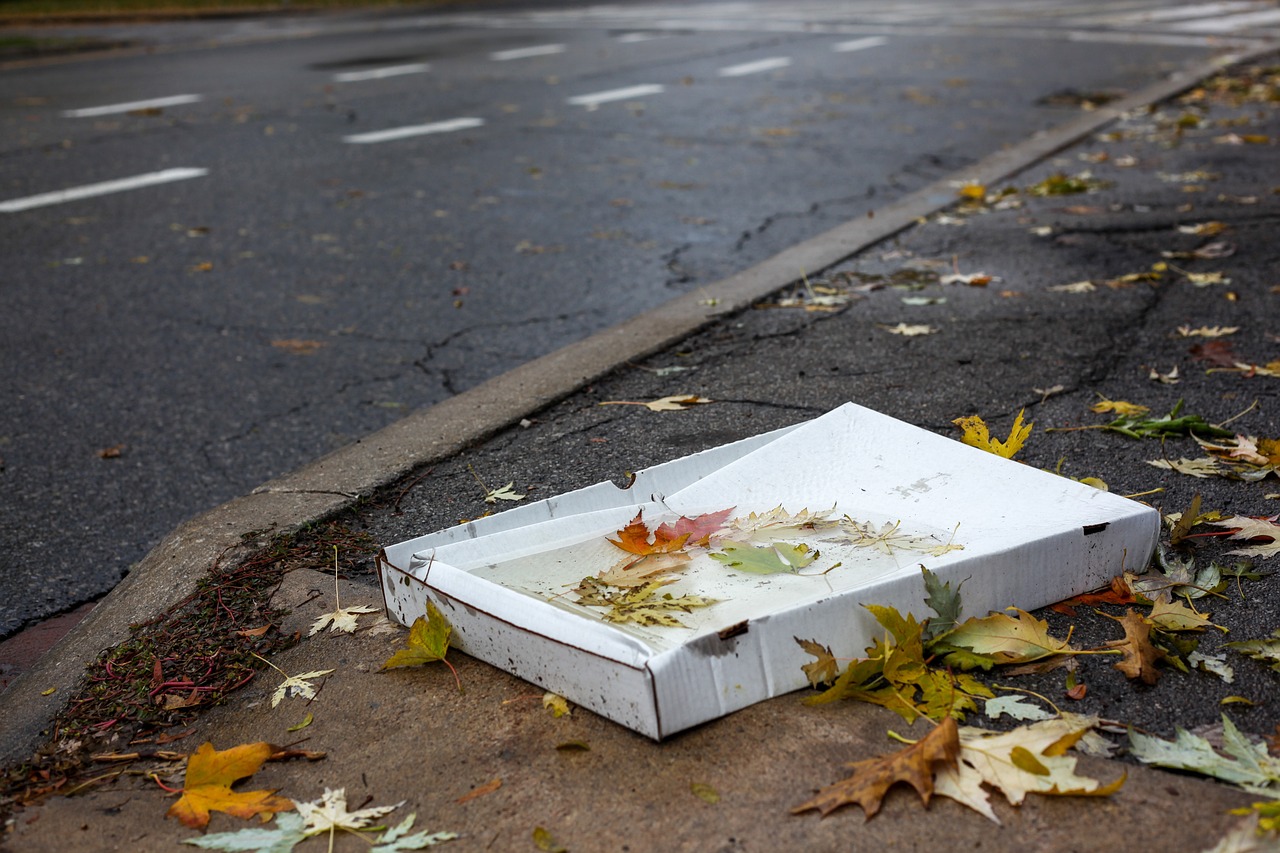
Understanding the Importance of Recycling
Recycling is not just a trendy buzzword; it's a vital practice that significantly impacts our environment. Imagine a world where every piece of plastic, paper, and metal is reused instead of ending up in overstuffed landfills. This isn't just a dream—it's a reality we can create by embracing recycling. By recycling, we can reduce waste, conserve natural resources, and minimize pollution. But why should we care? Let's break it down.
First off, recycling helps in conserving energy. Did you know that recycling one ton of paper can save enough energy to power an average home for six months? That's right! When we recycle materials, we save energy that would otherwise be used in the manufacturing of new products. This energy conservation leads to a significant decrease in greenhouse gas emissions, which is crucial for combating climate change.
Moreover, recycling plays a vital role in preserving our natural resources. Every time we recycle materials, we reduce the need for new raw materials. For instance, recycling metals like aluminum and steel means less mining, which can be incredibly harmful to the environment. By recycling, we are essentially giving our planet a breather, allowing it to recover from the relentless extraction of resources.
Another important aspect to consider is the economic benefits of recycling. It creates jobs and stimulates the economy. According to the U.S. Environmental Protection Agency, recycling and reuse activities in the United States accounted for over 1.1 million jobs and $236 billion in revenue. That's a massive boost for local economies and communities. When we recycle, we are not just helping the environment; we are also supporting our economy.
Additionally, recycling fosters a culture of sustainability. When individuals see their neighbors engaging in recycling practices, it inspires them to participate as well. This collective effort can lead to a significant change in community behavior, encouraging more people to adopt environmentally friendly habits. In fact, studies show that communities with strong recycling programs often see increased participation in other sustainability initiatives, such as composting and energy conservation.
Lastly, let's not forget about the educational aspect of recycling. When we engage in recycling, we often find ourselves learning about the materials we use and their impact on the environment. This knowledge can be shared with others, creating a ripple effect of awareness and responsibility. So, the next time you toss a bottle in the recycling bin, remember that you're not just recycling; you're educating yourself and others about the importance of sustainable practices.
In conclusion, understanding the importance of recycling is the first step towards fostering a community culture of sustainability. By recognizing its benefits—energy conservation, resource preservation, economic stimulation, community engagement, and educational opportunities—we can motivate ourselves and our neighbors to take action. Let's work together to create a cleaner, greener future for everyone!
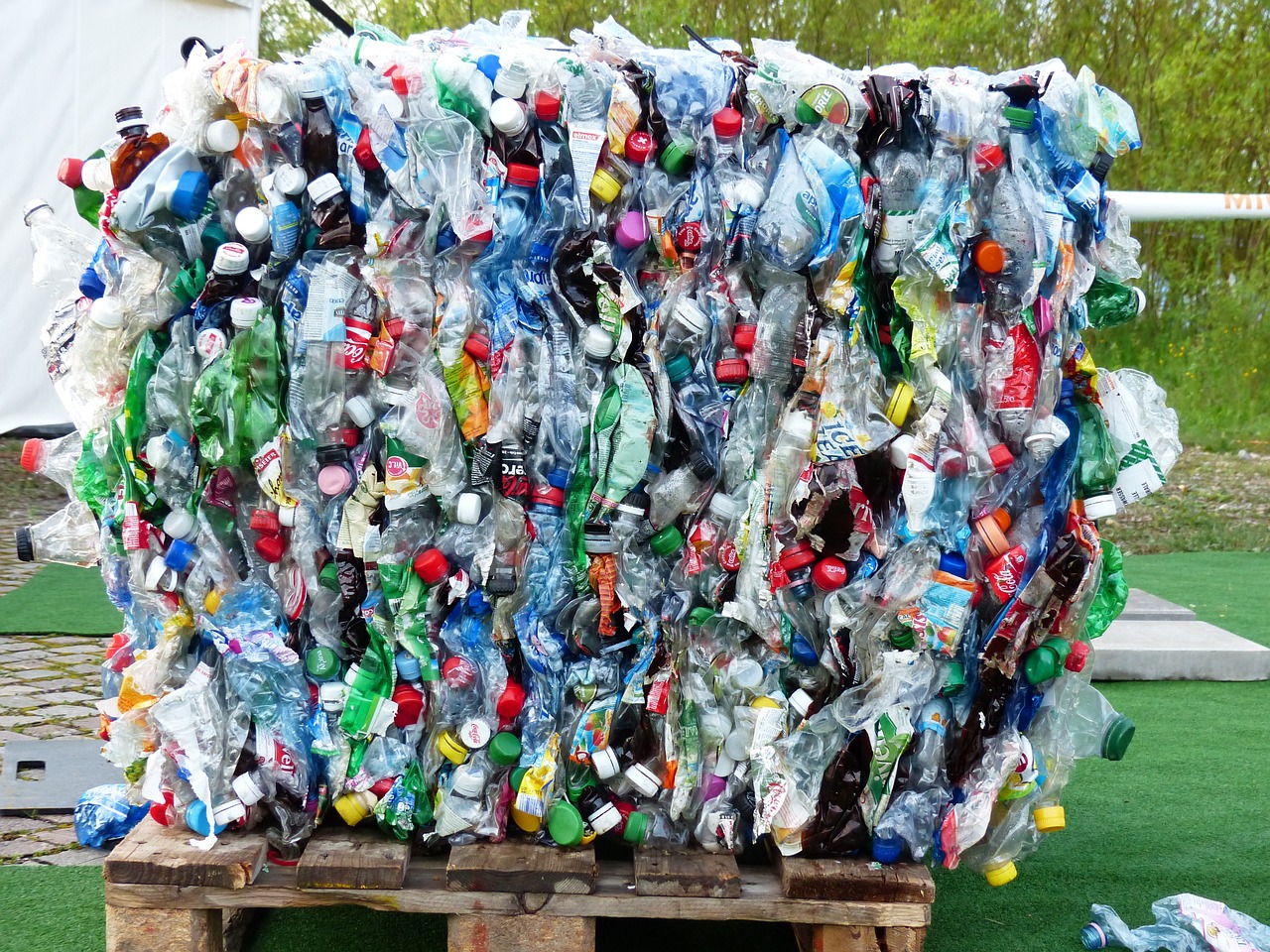
Organizing Neighborhood Recycling Events
Organizing neighborhood recycling events is not just about collecting bottles and cans; it's about creating a vibrant community spirit that embraces sustainability. Imagine the excitement of your neighbors coming together, sharing ideas, and learning about the positive impact of recycling. These events can serve as a catalyst for change, turning casual recyclers into passionate advocates for the environment. But how do you pull it all together? It starts with a vision and a plan!
First, you'll want to select a suitable location that is easily accessible to everyone. Parks, community centers, or even a large driveway can work wonders. The key is to ensure that everyone feels welcome and comfortable. Next, set a date that works for most people—weekends are usually the best bet since they allow families to participate without the hustle of a weekday schedule. Once you have your date and location locked in, it's time to spread the word!
Promoting your event effectively is crucial for maximizing participation. Use flyers, neighborhood newsletters, and social media platforms to get the word out. You might even consider creating a Facebook event where people can RSVP and share it with friends. The more buzz you create, the more likely your neighbors will join in the fun. You could also include a catchy tagline like, “Recycle Today for a Greener Tomorrow!” to inspire action.
Don't underestimate the power of local businesses in your recycling initiative! Partnering with them can significantly enhance the visibility and support for your event. Think about reaching out to nearby shops or restaurants to see if they would be willing to sponsor the event. They could provide resources like bins, refreshments, or even promotional items to encourage attendance. In return, you can promote their business during the event, creating a win-win situation for everyone involved.
Another essential element of your event is to provide educational materials that inform attendees about recycling practices. Consider creating informative flyers or brochures that outline what items are recyclable, the benefits of recycling, and fun facts about waste reduction. You can even set up a booth where people can ask questions and learn more about how they can make a difference in their daily lives. The more knowledge you share, the more empowered your neighbors will feel to take action!
Moreover, you can create a simple table to display the most common recyclable items versus non-recyclable items, which can serve as a handy reference during the event:
| Recyclable Items | Non-Recyclable Items |
|---|---|
| Plastic bottles | Plastic bags |
| Aluminum cans | Pizza boxes |
| Glass bottles | Food-contaminated items |
| Paper and cardboard | Styrofoam |
By organizing these events, you're not only helping to reduce waste but also fostering a sense of community engagement. Imagine the conversations sparked over a shared commitment to making your neighborhood a cleaner, greener place. It’s about more than just recycling; it’s about building relationships and creating a culture of sustainability that will last for generations to come.

Planning a Successful Event
This article explores effective strategies for motivating your neighbors to adopt recycling practices, fostering a community culture of sustainability and environmental responsibility.
Recycling plays a crucial role in reducing waste and conserving resources. Understanding its benefits can inspire individuals to participate actively in recycling initiatives within their community.
Hosting community recycling events can bring neighbors together and create a collective sense of responsibility. These events can serve as educational opportunities and encourage participation in recycling efforts.
Planning a successful recycling event is not just about picking a date and hoping for the best; it's about creating an engaging experience that resonates with your community. First and foremost, selecting a suitable location is key. Consider a central place where people frequently gather, like a local park or community center. This not only makes it convenient for attendees but also creates a lively atmosphere. Next, you'll want to choose a date that avoids conflicts with other local events. Think about weekends or evenings when people are more likely to be free. You could even run a quick poll in your neighborhood group to find the most suitable time.
Promotion is another critical aspect of planning. Utilize various channels to spread the word, from flyers in mailboxes to announcements on community boards, and don't forget about social media! Create an eye-catching event page that highlights what attendees can expect, such as fun activities, educational workshops, and refreshments. Remember, the more you engage your neighbors before the event, the more likely they are to attend.
Moreover, consider incorporating interactive elements into your event. Perhaps you can set up a booth where attendees can learn how to properly sort recyclables or even have a friendly competition to see who can bring the most recyclable items. This not only makes recycling fun but also ensures that participants leave with a better understanding of what can and cannot be recycled.
Lastly, don’t underestimate the power of follow-up. After the event, send out a thank-you message to everyone who participated, along with a summary of what was accomplished. This can include the total amount of materials collected or stories shared during the event. Keeping the momentum going will encourage your neighbors to stay engaged in recycling efforts long after the event is over.
Partnering with local businesses can enhance the event's visibility and support. Businesses can provide sponsorship, resources, or incentives for attendees, creating a win-win situation for everyone involved.
Providing informative flyers or brochures about recycling can help educate attendees. These materials can outline what items are recyclable and the environmental impact of recycling.
Establishing a network among neighbors can facilitate ongoing recycling efforts. This network can share resources, tips, and success stories to encourage continuous participation in recycling initiatives.
Social media platforms can be powerful tools for promoting recycling efforts. By sharing information and success stories, neighbors can inspire one another to engage in sustainable practices.
Forming a dedicated group on social media can provide a space for discussions, sharing resources, and coordinating recycling efforts among neighbors, fostering a sense of community engagement.
Sharing individual or group success stories can motivate others to recycle. Highlighting the positive impact of recycling within the community can create a ripple effect of participation.
Q1: How can I encourage my neighbors to recycle?
A1: Start by organizing community events, providing educational materials, and using social media to share success stories and tips.
Q2: What items are typically recyclable?
A2: Commonly recyclable items include paper, cardboard, glass bottles, aluminum cans, and certain plastics. Always check local guidelines for specifics.
Q3: How can I make recycling more fun for my community?
A3: Incorporate games, competitions, and interactive workshops into your recycling events to engage and educate participants.
Q4: What if my neighbors are resistant to recycling?
A4: Focus on education and awareness. Share the benefits of recycling and how it positively impacts the community and environment.
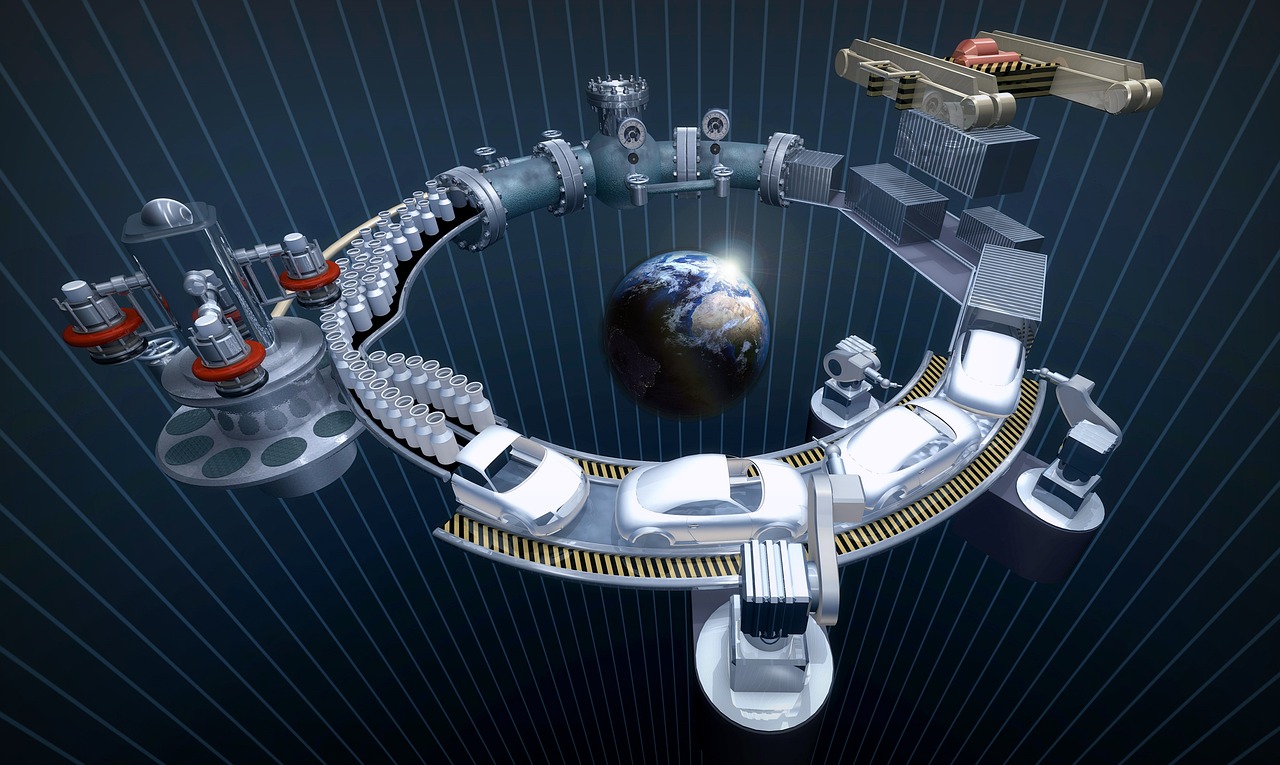
Engaging Local Businesses
When it comes to encouraging your neighbors to recycle, one of the most effective strategies is to engage local businesses. These establishments are not just places where we shop; they are integral parts of our community that can wield significant influence. By collaborating with local businesses, you can amplify your recycling message and create a stronger impact. But how do you get them on board? It's simpler than you might think!
First, consider the mutual benefits of such a partnership. Local businesses often seek ways to enhance their community image and attract environmentally conscious customers. By supporting recycling initiatives, they can showcase their commitment to sustainability. For instance, a local grocery store might host a recycling drop-off point, or a café could offer discounts to customers who bring in recyclable containers. This not only drives more foot traffic to their business but also fosters a sense of community involvement.
To kick off this engagement, start by identifying businesses that align with your recycling goals. Approach them with a clear proposal that outlines how their participation can make a difference. You could suggest organizing joint events, such as clean-up days or recycling drives, where the business provides resources like bins or promotional materials. Be sure to highlight how their involvement can be publicized through local media and social media platforms, giving them additional exposure.
Here’s a quick breakdown of how you might engage local businesses:
- Identify potential partners: Look for businesses that already promote sustainability.
- Present a clear plan: Show how their support can benefit both the community and their brand.
- Offer recognition: Promote their involvement through social media shout-outs or local newsletters.
- Collaborate on events: Work together to host recycling events that attract community participation.
Additionally, consider creating a business recognition program that highlights those who actively participate in recycling efforts. This could include certificates, window decals, or features in community newsletters, which not only rewards businesses for their efforts but also encourages others to join in. By fostering a culture of recognition, you create a positive feedback loop that can motivate more businesses to engage.
In conclusion, engaging local businesses in recycling initiatives is a win-win situation. Not only do businesses enhance their community image, but they also play a pivotal role in promoting sustainability. When we work together, we can create a ripple effect that inspires our neighbors to embrace recycling. So, get out there, connect with local businesses, and watch how collective efforts can lead to a greener community!
Q: How can I approach local businesses about recycling initiatives?
A: Start by identifying businesses that align with your values. Prepare a clear proposal outlining the benefits for them and the community, and request a meeting to discuss potential collaborations.
Q: What types of businesses are most likely to engage in recycling efforts?
A: Businesses that are already focused on sustainability, such as health food stores, cafes, and eco-friendly shops, are often more receptive. However, any business can be encouraged to participate!
Q: How can we measure the success of our recycling initiatives?
A: You can track the amount of recyclable materials collected during events, the number of participating businesses, and community feedback. Surveys can also help gauge public awareness and involvement.
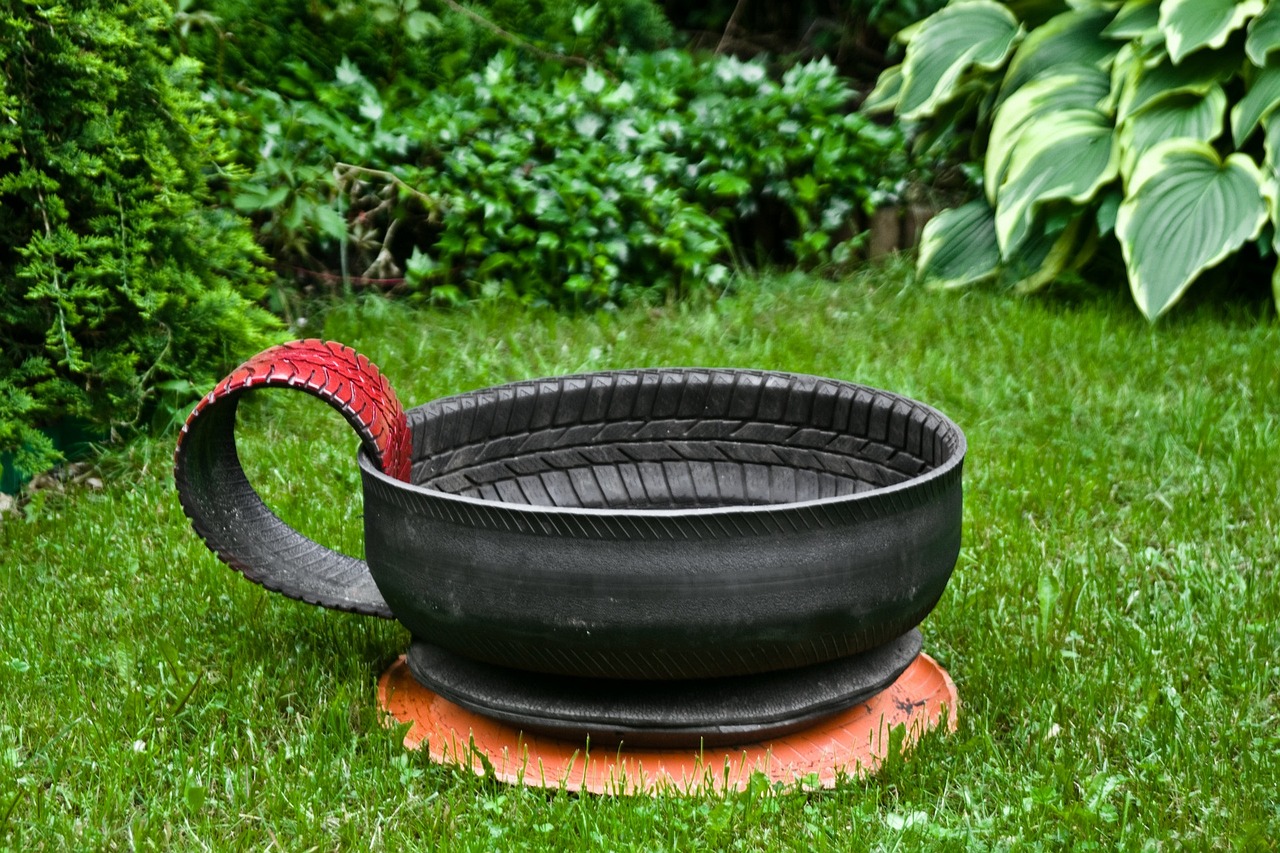
Creating Educational Materials
When it comes to encouraging recycling in your neighborhood, is a powerful strategy. These materials serve as vital tools that inform and inspire your neighbors about the importance of recycling and how they can contribute to the cause. Think of them as the friendly guides that help demystify the recycling process and make it accessible for everyone. This can range from simple flyers to detailed brochures that highlight what items can be recycled and the environmental benefits of doing so.
To get started, consider the following key elements to include in your educational materials:
- Clear Information: Ensure that the materials are easy to read and understand. Use simple language and avoid jargon that might confuse readers.
- Visuals: Incorporate eye-catching graphics and images that illustrate what can and cannot be recycled. A visual representation can often convey a message more effectively than text alone.
- Local Resources: Provide information about local recycling facilities, collection days, and any special programs that may be available in your area. This makes it easier for neighbors to take action.
Moreover, it’s essential to present the environmental impact of recycling in a relatable way. For instance, you could include statistics that show how much waste can be diverted from landfills through recycling efforts. A table comparing the environmental benefits of recycling different materials could be particularly impactful:
| Material | Recycling Benefits |
|---|---|
| Plastic | Saves energy, reduces pollution, and conserves petroleum. |
| Paper | Reduces deforestation, saves water, and decreases landfill waste. |
| Glass | Can be recycled indefinitely without loss of quality, saves energy. |
Finally, consider distributing these materials in various formats. You could hand out printed flyers during neighborhood meetings, post them on community bulletin boards, or even share digital versions via email or social media. The more accessible the information, the more likely your neighbors will engage with it. Remember, the goal is not just to inform, but to inspire a collective movement towards recycling that benefits everyone in the community.
Q: What materials can I recycle?
A: Most communities accept paper, cardboard, glass, metals, and certain plastics. Check with your local recycling program for specific guidelines.
Q: How can I get involved in recycling initiatives?
A: You can start by participating in local recycling events, spreading awareness among your neighbors, and volunteering for community clean-up days.
Q: What if my neighbors are resistant to recycling?
A: Try to understand their concerns and provide them with educational materials that address those issues. Sometimes, a little information can go a long way in changing perspectives.

Building a Community Recycling Network
Building a community recycling network is like planting a garden; it requires nurturing, collaboration, and a shared vision to flourish. When neighbors come together with a common goal of recycling, they create a supportive environment that encourages sustainable practices. This network not only facilitates recycling but also fosters friendships and strengthens community ties. Imagine a neighborhood where everyone is motivated to recycle, and the streets are lined with vibrant gardens of sustainability. Sounds appealing, right?
To kickstart this initiative, consider hosting regular meetings where residents can discuss their recycling experiences, challenges, and successes. This creates a safe space for sharing knowledge and tips. You might be surprised at how many people are eager to contribute! For instance, one neighbor might have discovered a unique way to repurpose old glass jars, while another could share insights on the best local recycling facilities. By pooling these ideas, the community can develop a comprehensive recycling strategy that suits everyone's needs.
Furthermore, utilizing digital platforms can significantly enhance the network's effectiveness. Creating a dedicated online group, perhaps on Facebook or WhatsApp, allows members to share updates, reminders, and resources related to recycling. In this virtual space, neighbors can post questions, share articles about recycling innovations, or even organize small challenges to see who can recycle the most within a month. These friendly competitions can spark enthusiasm and keep the momentum going.
Another essential element of a successful community recycling network is the establishment of a mentorship program. Pairing experienced recyclers with newcomers can provide guidance and encouragement. Think of it as a buddy system, where seasoned recyclers can lead by example, showing others the ropes and helping them navigate the sometimes confusing world of recycling. This personal touch can make all the difference in motivating individuals to participate actively.
To ensure the network remains vibrant and effective, regular feedback sessions are crucial. These can be informal gatherings or online surveys where members can express their thoughts on what’s working and what needs improvement. Just like a garden needs weeding and watering, your community recycling network requires attention and adjustments to thrive. By staying engaged and responsive to the needs of the community, you can cultivate a culture of recycling that lasts.
Overall, building a community recycling network isn’t just about collecting materials; it’s about fostering a sense of belonging and shared responsibility. As neighbors unite under the banner of sustainability, they not only contribute to a cleaner environment but also create lasting bonds that enrich their community. So, why not take the first step today? Start the conversation and watch your neighborhood blossom into a hub of recycling and environmental awareness.
- How can I get my neighbors involved in recycling? Start by organizing a small meeting or event to discuss the benefits of recycling and share ideas.
- What are some effective ways to promote recycling in the community? Utilize social media, create informative flyers, and host community challenges to engage residents.
- How can I educate myself about recycling? Look for local workshops, online resources, and community groups focused on sustainability.
- What if some neighbors are resistant to recycling? Approach the topic with empathy, share success stories, and highlight the benefits to encourage participation.
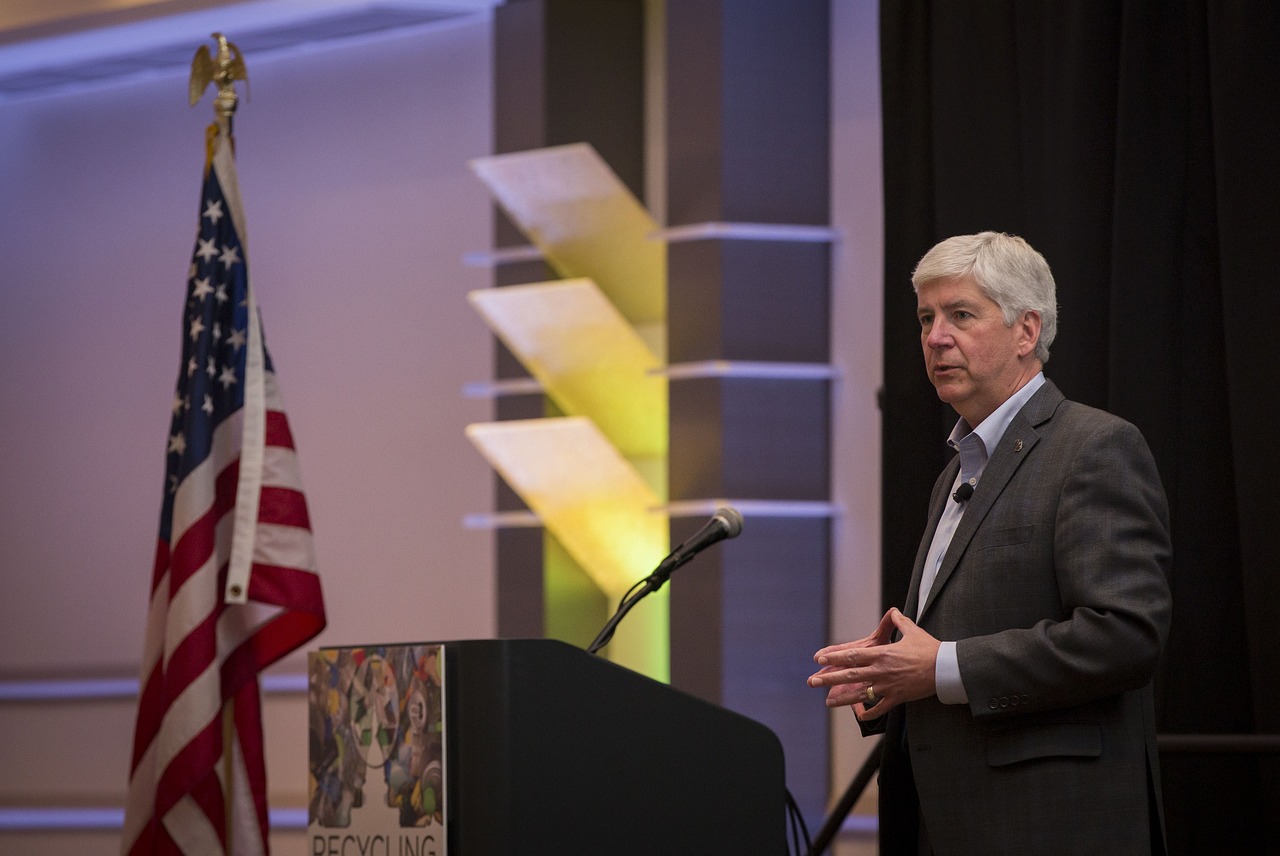
Utilizing Social Media for Awareness
In today's digital age, social media is not just a platform for sharing memes or vacation photos; it has become a powerful tool for spreading awareness about important issues, including recycling. Imagine scrolling through your feed and stumbling upon a post that highlights the incredible impact recycling can have on our planet. This is where you can step in and harness the power of social media to encourage your neighbors to adopt sustainable practices. By sharing engaging content, you can spark conversations and inspire action within your community.
First and foremost, consider creating a dedicated social media group focused on recycling initiatives. This can serve as a virtual hub where neighbors can exchange ideas, share tips, and discuss local recycling efforts. You might be surprised at how many people are eager to join in when they see a community coming together for a common cause. You could even organize challenges, like a “Recycling Challenge of the Month,” where participants can showcase their recycling efforts and share their experiences. This not only promotes recycling but also builds camaraderie among neighbors.
Additionally, don't underestimate the power of storytelling. Highlighting success stories from individuals or families in your neighborhood can create a ripple effect. When people see their neighbors making a difference, they’re more likely to want to join in. You can create posts that showcase before-and-after photos of recycling efforts, or even short videos of community members explaining what recycling means to them. This personal touch can resonate deeply and encourage others to take action.
Moreover, you can use social media to share valuable information about what can and cannot be recycled. Many people are unsure about recycling rules, which can lead to contamination and wasted efforts. By posting infographics or short videos explaining the dos and don'ts of recycling, you can educate your community and empower them to recycle correctly. Here’s a simple table you could share:
| Recyclable Items | Non-Recyclable Items |
|---|---|
| Plastic bottles | Pizza boxes |
| Aluminum cans | Plastic bags |
| Cardboard | Used tissues |
| Glass jars | Polystyrene foam |
Engaging with local environmental organizations on social media can also amplify your efforts. Tagging these organizations in your posts can help spread your message further and attract more community members to your cause. They may even share your posts, giving you access to a wider audience. Remember, the goal is to create a buzz around recycling that catches the attention of your neighbors and motivates them to take part.
Lastly, don’t forget to celebrate milestones! If your community reaches a recycling goal or successfully organizes an event, make sure to share that achievement on social media. Celebrating these wins not only boosts morale but also reinforces the idea that every little effort counts. So, whether it’s a simple post thanking everyone for their participation or a shout-out to a neighbor who has gone above and beyond, make it known that recycling is a community effort worth recognizing.
- Why is recycling important? Recycling helps reduce waste, conserves natural resources, and minimizes environmental pollution.
- How can I get my neighbors involved in recycling? Organize events, create a social media group, and share educational materials to engage your community.
- What should I do if my neighbors are resistant to recycling? Start by educating them about the benefits, share success stories, and create a supportive community atmosphere.
- Can I recycle everything? No, not all materials are recyclable. It's important to know what can and cannot be recycled in your area.
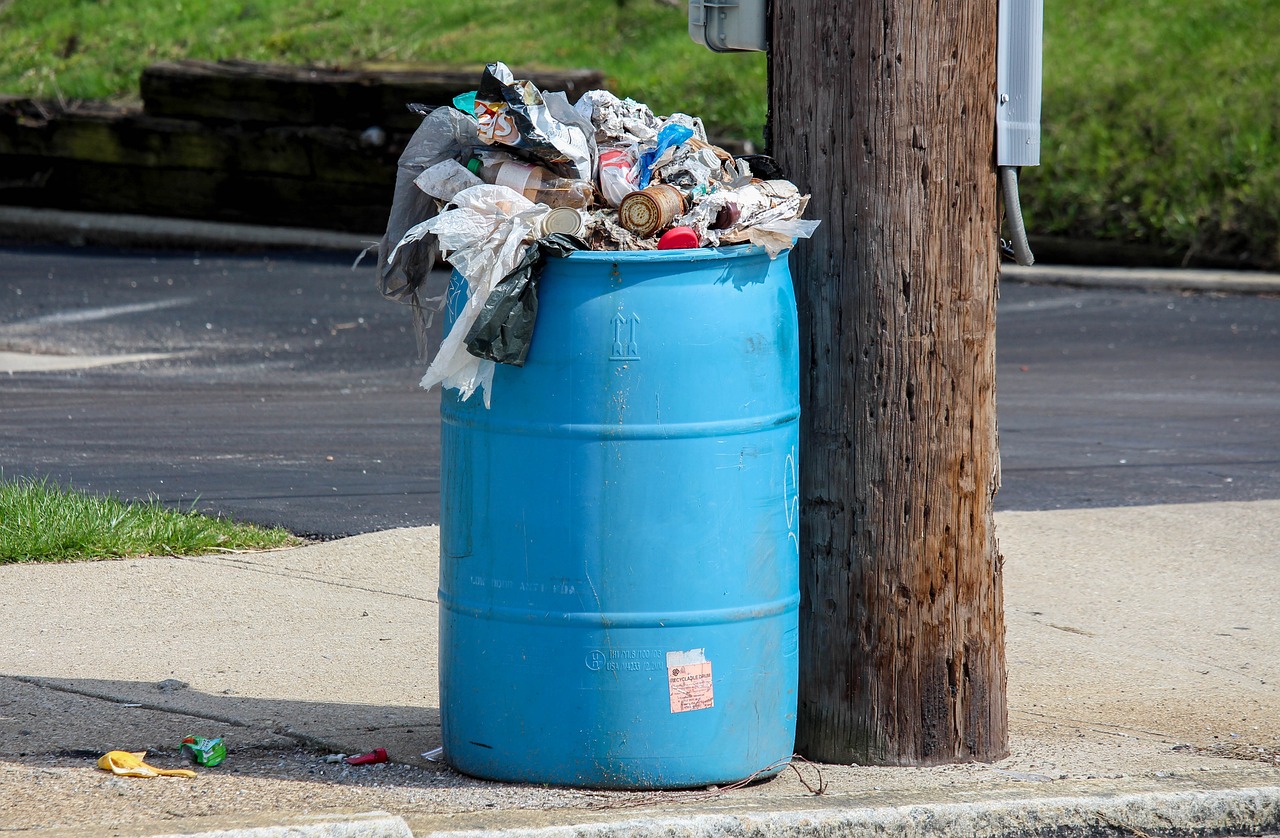
Creating a Community Group
Creating a community group focused on recycling is like planting a seed that can grow into a lush garden of sustainability. Imagine a vibrant network of neighbors coming together, united by a common goal: to make our environment cleaner and healthier. This group can be a hub of activity, where ideas flourish, and everyone feels empowered to contribute. But how do you get started?
First, it's essential to gather a few enthusiastic individuals who share your passion for recycling. This could be as simple as chatting with friends or neighbors during a casual gathering or even posting on community boards. Once you have a small group, consider setting up an initial meeting. This gathering can serve as a brainstorming session to discuss goals, ideas, and how best to engage the wider community.
One effective way to structure your community group is to define specific roles and responsibilities. This not only helps in organizing efforts but also makes everyone feel valued. For instance, you might have:
- Event Coordinator: Responsible for planning and organizing recycling events.
- Communications Officer: Handles social media and outreach efforts.
- Educational Liaison: Creates informative materials and workshops.
Next, consider utilizing social media platforms to create a dedicated group page. This online space can serve as a virtual meeting point where members can share updates, resources, and success stories. It’s a fantastic way to keep the momentum going and encourage ongoing discussions about recycling practices. Additionally, you can use this platform to promote upcoming events and invite more community members to join in.
Don't forget the power of collaboration! Partnering with local organizations, schools, or even environmental groups can significantly enhance your community group's impact. These partnerships can provide valuable resources, such as speakers for educational events or materials for recycling drives. Plus, it’s a great way to expand your network and reach more people.
As your group grows, consider organizing regular meetings or events. These can range from casual coffee meet-ups to more structured workshops where members can learn about different aspects of recycling, such as composting or upcycling. The key is to keep the atmosphere friendly and welcoming. Celebrate small victories, and don’t shy away from sharing challenges; after all, we’re all in this together!
Lastly, always be open to feedback and new ideas. Encourage members to share their thoughts on how the group can improve and evolve. This openness fosters a sense of ownership and belonging, making everyone feel like an integral part of the group’s mission. Remember, the goal is not just to recycle but to create a community that cares about the environment and supports each other in making sustainable choices.
Q: How can I find like-minded individuals to join my community group?
A: Start by reaching out to friends, family, or neighbors who are interested in recycling. You can also utilize social media platforms to post about your initiative and invite others to join.
Q: What types of events can we organize?
A: You can organize recycling drives, educational workshops, community clean-up days, or even fun events like a recycling-themed potluck to engage people and spread awareness.
Q: How do we keep members motivated?
A: Regular communication, celebrating successes, and providing educational resources can keep members engaged. Also, creating a friendly atmosphere where everyone feels welcome and valued is crucial for motivation.

Highlighting Success Stories
Success stories are like the shining stars in the recycling universe; they not only illuminate the path for others but also inspire collective action. When neighbors share their recycling achievements, it creates a powerful narrative that encourages others to join in the effort. Imagine a neighbor who started composting their kitchen waste and, in just a few months, transformed their garden into a lush paradise. Their story can spark interest and motivate others to consider composting as well. This ripple effect is crucial in fostering a community-wide commitment to sustainability.
One effective way to highlight these success stories is through social media platforms. For instance, creating a dedicated hashtag for your neighborhood can help gather all the inspiring tales in one place. When someone posts about their recycling triumphs—be it reducing plastic use, upcycling furniture, or organizing a local clean-up—others can easily find and share these posts. This not only builds a sense of community but also amplifies the message that recycling is not just an individual effort; it’s a communal journey.
Moreover, consider organizing a monthly feature where you spotlight a different neighbor's recycling success. This could be done through a newsletter, community bulletin board, or even a local blog. For example, you might create a section titled “Recycling Champion of the Month,” where you share their story, tips, and the impact of their actions. Here's a simple table to illustrate how you might structure this feature:
| Month | Neighbor’s Name | Success Story | Impact |
|---|---|---|---|
| January | Jane Doe | Started a neighborhood composting initiative. | Reduced organic waste by 30% in the community. |
| February | John Smith | Organized a recycling drive that collected 500 pounds of plastic. | Raised awareness about plastic pollution. |
By showcasing these stories, you not only celebrate the achievements of your neighbors but also provide practical examples that others can emulate. It’s about creating a culture where everyone feels empowered to make a difference. When people see their friends and neighbors succeeding in recycling, they may think, “If they can do it, so can I!” This sense of possibility is contagious and can lead to greater participation in recycling initiatives.
Finally, don't forget to encourage neighbors to share their stories during community events. Perhaps you could set up a “Story Corner” where people can write down their experiences and post them on a community board. This not only fosters a sense of pride but also serves as a reminder that every small action counts. In the grand scheme of things, these individual efforts contribute to a larger movement toward environmental sustainability.
- Q: How can I get my neighbors involved in recycling?
A: Start by educating them about the benefits of recycling and organizing community events to raise awareness.
- Q: What if my neighbors are resistant to recycling?
A: Share success stories and show them the positive impact recycling has had on others in the community.
- Q: How can social media help in promoting recycling?
A: Social media can be used to share tips, success stories, and organize events, creating a sense of community around recycling efforts.
Frequently Asked Questions
- Why is recycling important for my community?
Recycling is essential because it reduces waste, conserves natural resources, and minimizes pollution. When more people recycle, it fosters a culture of sustainability, making your community cleaner and more environmentally friendly.
- How can I encourage my neighbors to join recycling efforts?
Start by organizing neighborhood events focused on recycling. You can also create educational materials that highlight the benefits of recycling and share success stories through social media to inspire others.
- What types of materials can be recycled?
Common recyclable materials include paper, cardboard, glass, metals, and certain plastics. Providing a clear list of recyclable items can help clarify what can be recycled and reduce contamination.
- How do I organize a successful recycling event?
Plan ahead by choosing a suitable location and date. Promote the event through flyers, social media, and word of mouth. Engaging local businesses for sponsorship can also enhance visibility and participation.
- Can social media really make a difference in recycling efforts?
Absolutely! Social media is a powerful tool for spreading awareness. By sharing tips, success stories, and event information, you can motivate others to engage in recycling initiatives and build a supportive community.
- What if my neighbors are not interested in recycling?
Don’t get discouraged! Sometimes, people just need more information. Host an informative session or provide resources that explain the benefits of recycling. Highlighting local success stories can also spark interest.
- How can I track the success of our community recycling efforts?
Set measurable goals and keep track of the amount of materials recycled over time. Sharing this data with the community can help maintain enthusiasm and show the positive impact of collective efforts.



















